Wired To Win: Surviving the Tour de France
After near three year gestation period, Wired to Win has finally hit IMAX theatres across the globe....
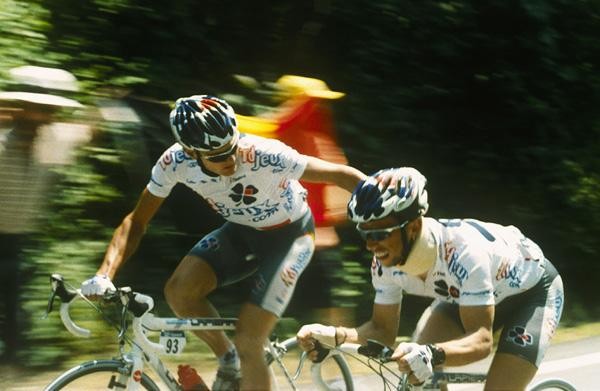

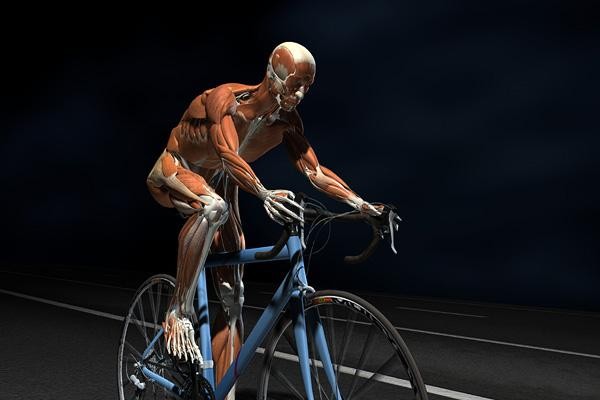
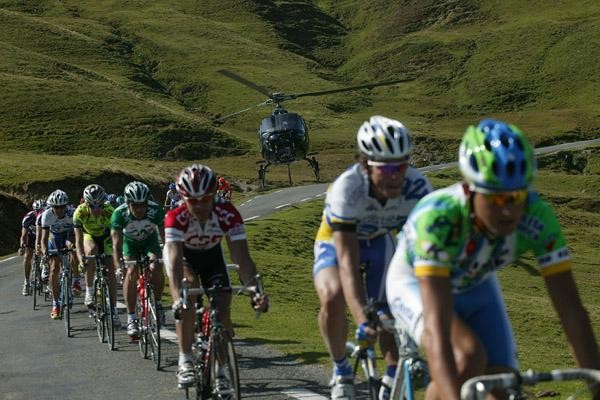
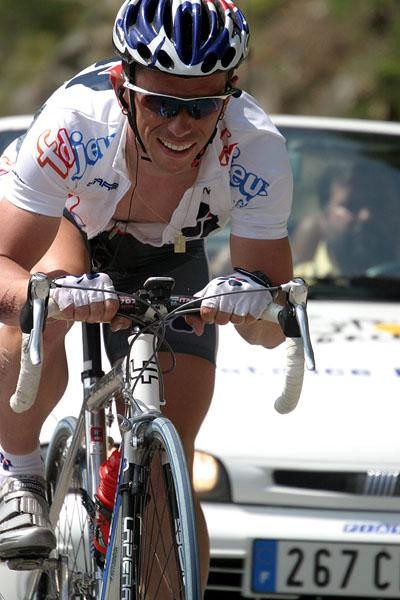

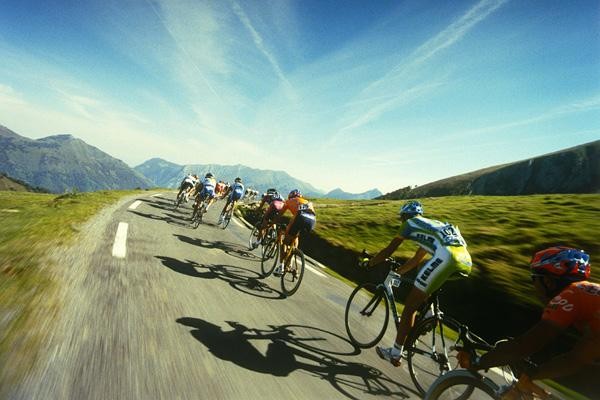






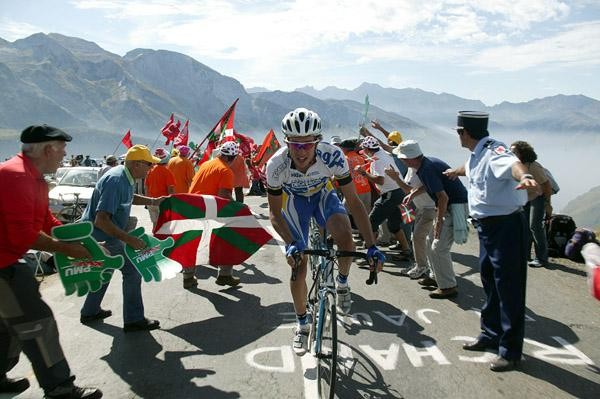
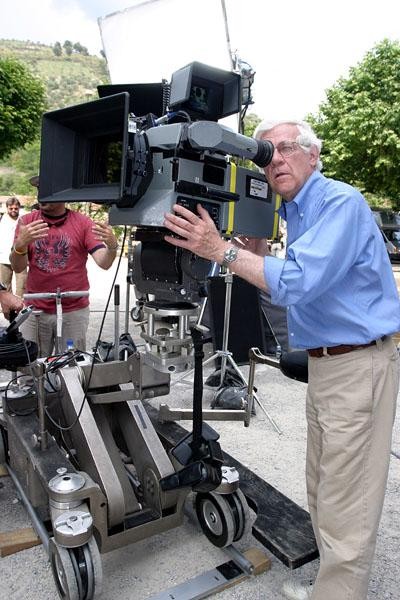

Tales from the peloton, March 29, 2006
Brain meets bike on the giant screen
After near three year gestation period, Wired to Win has finally hit IMAX theatres across the globe. The film follows the efforts of FDJeux.com teammates Jimmy Casper and Baden Cooke in the 2003 Tour de France, and how their brains cope with the stress. Chris Henry reports on the movie from New York.
The 2003 Tour de France, the centenary of the event, generated considerable excitement for many reasons. The hundredth anniversary of the first Tour, Lance Armstrong's quest to join the elite club of five-time winners, fellow American Tyler Hamilton's struggle to overcome a broken collarbone and finish fourth in Paris, perennial runner-up Jan Ullrich's closest ever deficit to Armstrong... Each of these elements provided the race with almost unparalleled drama. Behind the scenes, excitement was also being generated by a Tour first: an IMAX feature film being created on the roads and in the skies above France.
Director Bayley Silleck had a lengthy filmmaking resumé, but was new to the world of professional cycling. He found himself easily drawn into the stories and the drama of the Tour. "It's kind of embarrassing, really," he explained. "I didn't realize it was a team sport... that there was actually an incredible amount of strategy involved. It's like chess on bikes. When you get to know some of the riders, and you learn how hard it is just to finish the race, let alone win anything, it's almost impossible not to get emotionally invested."
Wired to Win follows the stories of FDJeux.com teammates Baden Cooke and Jimmy Casper through the 2003 Tour as the two fight for very different results and overcome their own challenges through the race. Casper, a victim of the stage 1 pile up that crushed the hopes and collarbones of numerous riders, courageously braved pain to support his team and simply finish each day, while Cooke took his first ever stage victory and battled to ultimately win the green points jersey in Paris. Throughout the film, the science of the brain and how the body's control centre copes with the stresses and pain of the Tour are examined through computer-generated graphics and medical imagery to explain how cyclists survive and thrive in the sport's greatest race.
Big film, big challenges
Get The Leadout Newsletter
The latest race content, interviews, features, reviews and expert buying guides, direct to your inbox!
From the sound of it, no IMAX film has ever been easy to make. The sheer scale and ambition of these high-impact films have pushed filmmakers to challenge themselves and their equipment at every turn. Wired to Win was no exception, as Silleck and his crew of more than 50 people dared to follow human stories amidst the dizzying, insane and unpredictable three week Tour de France. Research and development for the film and shooting techniques continued literally until the race kicked off from Paris. No amount of planning could fully prepare the filmmakers for the myriad surprises that would be thrown their way.
Cyclingnews spoke with Daniel Ferguson (co-writer and 1st Assistant Director) and Myles Connolly (Line Producer/Picture Editor) prior to the film's world premiere in New York, curious to know just which challenges stood out from the exhausting process.
"Everything was so dynamic with [Tour organizers] A.S.O.," Connolly explained. "We had signed the contract, driven the entire route of the Tour to scout camera locations, then found out from A.S.O. that our locations conflicted with France Télévisions’." (The crew selected every camera position months in advance and submitted corresponding GPS points to A.S.O. for each location).
Ferguson's stand-out memory was the difficulty in finding a functional radio frequency to use for communications between vehicles, and most importantly, remote control of the IMAX camera to be mounted on a redesigned BMW motorcycle in the race. Because the camera equipment was far too big for a person to operate on the moto, radio control was the only way to handle the camera functions. The crew learned soon enough that even remotely controlling the camera from a following car wouldn't work, given the abundance of other cars and motorcycles in the race, all competing for frequencies over the airwaves, and the twisting roads and signal problems so often encountered in the mountains.
The only solution was to control the camera from a helicopter, meaning every hour of footage would require an hour in the air. Not only that, securing a radio frequency would prove a far greater source of stress than anyone imagined, as Ferguson waged a campaign until mere days before the prologue to get his system in place.
"All of the frequencies we planned on using were illegal in France, and A.S.O., the teams, and all the other television crews had the other frequencies locked up," Ferguson told Cyclingnews. "We spent all this time on research and development, we rebuilt a motorcycle... but every day it was, 'are we going to get a frequency?'"
After patient but persistent negotiations, the crew finally secured six frequencies from the French military: one to control the stabilizing mount on the motorcycle, one for video playback, one to focus, one to adjust the aperture, one to turn the camera on and off, and one to communicate. In the end, communication would prove vital not just within the crew.
"The people at A.S.O. were a huge help," Connolly added. "At the end of the day, it's all about relationships."
The evolution of a documentary
Just as technical glitches can create hiccups in the making of a film, the human element remains no more predictable. The memorable stage 1 crash in 2003 jeopardized the fortunes of many riders, including Tyler Hamilton, who was originally picked as the focal point of the film. Hamilton was in his second year with Team CSC, and facing up to his first real effort as team leader in the Tour. On only the second day of racing, Hamilton was on the ground in the mass pile-up nursing a broken collarbone. Panic among the filmmakers was followed by thoughts of a story-telling gold mine as the gritty Hamilton opted to stay in the race. It was at this point that Casper also presented himself as a subject, strapping on a neck brace and braving stage 2 after spending the evening at the local hospital.
While the crew followed Hamilton throughout the course of the Tour, the American would later test positive for a doping offence after the 2004 Vuelta a España. With the movie barely into the editing phase in late 2004, the decision was made that a doping scandal could not co-opt the focus of the film. Director Silleck did everything he could to diffuse pressures from the film's sponsors, hoping that Hamilton would be exonerated, but ultimately had to inform the rider that the film would be taking a new direction.
"It was a corporate decision, pure and simple," Silleck told Cyclingnews when asked about the change of plan. "We simply could not have this film become a story about drugs. I was sorry it had to happen, and although I don't know the real story with Tyler - I don't know if we ever will - I have the utmost respect for him and I think he's a great person. In fact, when I told him the film was changing direction, he and [his wife] Haven were extremely gracious and understanding.
"You can plan everything, but at a certain point, you have to recognize that you're making a documentary, and you need to adapt when things change," Silleck commented about the experience as a whole.
Casper became the new, central figure in the story, but his injuries ultimately caught up with him in the high mountains and he abandoned the race. It was he who pointed the Wired to Win crew in the direction of teammate Cooke, who was emerging as a real contender for the green jersey.
The Big Race gets bigger
For any lover of cycling, the larger than life footage of the Tour winding through the mountains and through the French countryside is nothing short of spectacular. It may be easier for some to determine which scenes were actually re-enacted versus the majority of footage that came straight from the race, but for the purposes of this film, but this may not be of great consequence. From helicopter shots high above the Alps to sweeping descents in the midst of the peloton, watching the Tour on a 70 foot movie screen is a treat.
The graphic images of brain synapses firing intertwined with the unfolding story of the race offer a high-tech glimpse into the complexities of the human brain and how research has furthered our understanding of the body's functions and responses to internal and external events. The film's dual focus on the Tour de France and the functions of the athlete's brain at work provide a nice balance between science and artistry, even if in 40 minutes neither subject seems to receive quite the full attention it deserves on the IMAX screen.
The unfortunate fact seems to be that the economics of IMAX films do not permit a full-length love affair with the Tour brought to life on the giant screen. As one member of the production crew explained, IMAX films are targeted primarily toward museums, where most theatres are located. For that reason, the subject matter is all but required to carry an educational component, and film lengths rarely exceed 40-50 minutes. To bring an IMAX feature to a private theatre requires current material and a large budget. While cycling fans world-wide would drool over the hours of footage left on Wired to Win's cutting room floor, the filmmakers dutifully acknowledge that the market just isn't there for that sort of project. That being said, director Silleck noted that he has received some interest in a special presentation in France sometime prior to the Tour.
As longtime Tour followers, Connolly, Ferguson, and the Wired to Win crew shared a healthy respect for France Télévisions and the artistry of its Tour coverage every year. Nevertheless, they had their own statement to make.
"With IMAX films, as filmmakers we want to blow people's minds," Connolly said, "but we also want to show something that you don't get to see on TV."
Wired to Win does just that.
More information: www.wiredtowinthemovie.com.